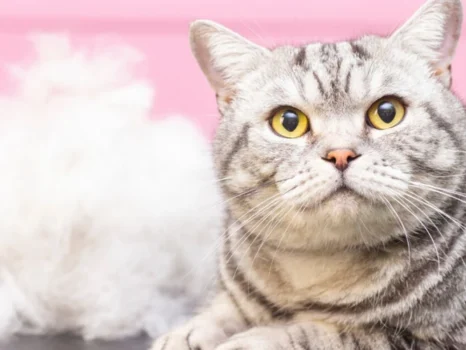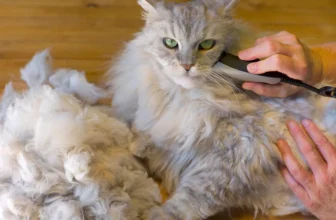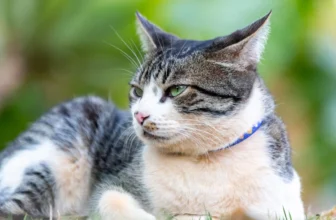As every American Wirehair owner knows, dealing with shedding can be a frustrating and neverending battle. No matter how careful you are, it always seems like there’s a new clump of hair on the couch or a fur ball in the corner. But have no fear, because there are tried and true tips and tricks that can help manage this pesky problem. In this article, we will delve into the reasons why American Wirehairs shed, and provide a comprehensive guide for managing shedding, both at home and with the help of a veterinarian. So, grab your lint rollers and let’s get started!
Why do American Wirehairs Shed?
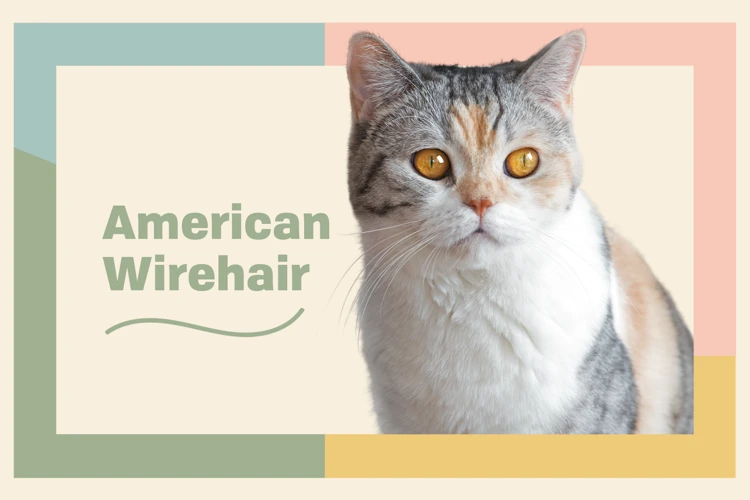
As American Wirehairs are beloved pets for many individuals, it’s important to understand the reasons behind their shedding habits. Shedding is a natural occurrence for all cats, but it can vary in frequency and quantity among different breeds. For American Wirehairs, there are several factors that contribute to their shedding, including their unique coat, seasonal changes, and potential health issues. To learn more about managing shedding in your American Wirehair, check out our American Wirehair brushing guide.
The Coat of an American Wirehair
The Coat of an American Wirehair is unique and designed to be low maintenance. One of the characteristics of the breed is their dense, wire-like coat that is crimped and springy to the touch. This coat helps to regulate their body temperature and protect them from the elements. However, it’s also the reason why they shed.
It’s essential to understand that the coat of an American Wirehair requires care to keep it healthy and reduce shedding. Regular grooming is crucial, and wirehair grooming tools are an absolute must for maintaining their coat. These specialized brushes help remove loose hair and prevent matting, which leads to further shedding.
Bathing and grooming go hand in hand when it comes to managing shedding in an American Wirehair. They should receive regular baths with the best shampoo and conditioner for their breed. Bathing not only helps reduce shedding, but it also keeps their coat clean and healthy.
Trimming your American Wirehair’s claws regularly also helps to reduce shedding. Long claws can get caught in their fur, which causes matting and tangles. Matting and tangles lead to more shedding and often require a trip to the groomer to fix. Additionally, keeping their claws short prevents them from scratching themselves, which can create bald spots. For a guide on claw trimming, visit our article on trimming American Wirehair claws.
Finally, American Wirehairs require regular ear cleaning to prevent infections and matting in the fur around their ears. Wax and debris build-up can cause discomfort and lead to scratching, which creates bald spots and more shedding. Ear cleaning should also be part of a regular grooming routine. For more information on how to clean your American Wirehair’s ears, check out our article on cleaning American Wirehair ears.
Understanding the unique characteristics of the American Wirehair coat and how to care for it is vital to reducing shedding. Regular grooming and bathing, claw trimming, and ear cleaning are essential parts of their care routine that will keep their coat healthy, shiny, and reduce shedding.
Seasonal Changes
As with most feline breeds, American Wirehairs experience seasonal changes in their fur coats. These changes can result in shedding to varying degrees in different seasons of the year. As temperatures begin to rise, cats will start to lose their thick winter coats in favor of a lighter summer coat. This is typically accompanied by more frequent shedding, which can be a little alarming for pet owners at first.
During the shedding season, it is normal for American Wirehairs to shed more than usual. It is important to note that shedding itself is not always a cause for concern, but there are some things to keep in mind. One of the main things to watch out for is excessive shedding. While a moderate amount of shedding is considered normal, excessive shedding can often be a sign of underlying health issues.
During seasonal changes, regular bathing can help to control shedding. It is important to always use a cat-specific shampoo and conditioner that will not dry out their skin. There are special grooming tools available specifically designed for American Wirehairs that can help reduce shedding, such as the slicker brush or rubber curry brush.
Another important factor to keep in mind during seasonal changes is that diet and nutrition can play a role in coat health. A healthy diet rich in omega-3 and omega-6 fatty acids can help keep an American Wirehair’s coat healthy and strong.
Seasonal changes can result in shedding for American Wirehairs. While shedding is a normal occurrence, excess shedding can indicate an underlying health problem. By using proper grooming tools and products, as well as maintaining a healthy diet, shedding can be controlled during seasonal changes. If you notice any abnormalities in your cat’s shedding or coat health, it is important to consult with a veterinarian.
Health Issues
There could be several health issues that cause excessive shedding in American Wirehairs. One common health problem that leads to shedding is skin allergies. When a cat is allergic to something in its environment such as pollen, dust mites, or mold, it can cause them to scratch or bite their own skin. This can damage their coat and cause it to fall out in patches. Additionally, parasites like fleas or mites can lead to intense itching and scratching, further worsening the hairs condition and causing shedding.
Another health condition that can cause shedding in American Wirehairs is thyroid problems. An overactive thyroid gland, also known as hyperthyroidism can cause hair loss in cats. Other symptoms of hyperthyroidism include weight loss, increased appetite, and hyperactivity in your pet. However, an underactive thyroid gland or Hypothyroidism can also cause hair loss. If you notice unusual hair loss in your American Wirehair, visit a veterinarian to check their thyroid levels.
Finally, poor nutrition can also lead to coat and shedding problems in cats. Lack of essential nutrients such as Zinc, Fatty acids, and biotin can cause fur brittleness, excessive shedding, and hair loss. Make sure to feed your American Wirehair with quality cat food and include necessary supplements in their diet.
If you notice excessive or abnormal shedding in your American Wirehair and have ruled out seasonal causes or improper grooming, make sure to visit a veterinarian for advice and diagnosis for any potential health issues. Remember that taking care of their health is important for maintaining a healthy and shiny coat.
Pro tip: Prevention is always better than cure. Regular visits to the veterinarian and quality dietary habits can help prevent health problems that lead to your pet’s excessive shedding.
Tips for Managing Shedding
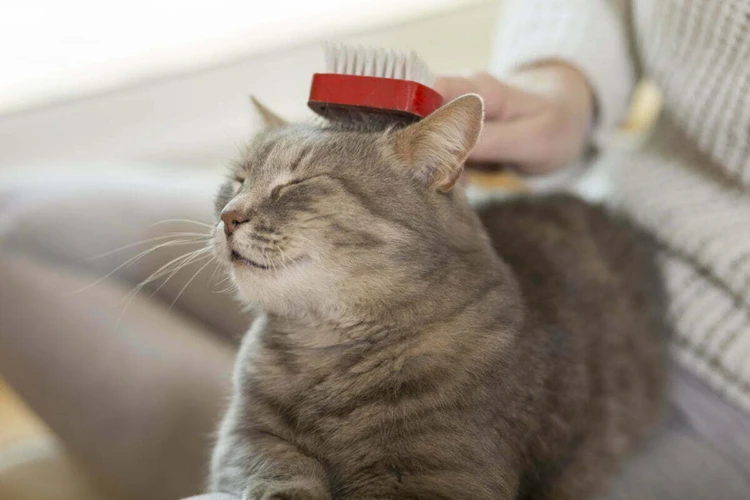
Keeping your American Wirehair cat looking and feeling healthy can be a challenging task, especially when it comes to dealing with shedding. Shedding is a natural process for cats, but excessive shedding can be concerning. Fortunately, there are several tips and tricks you can implement to manage your cat’s shedding and minimize the amount of hair you find around your home. In this section, we will explore some effective methods for managing shedding in American Wirehairs. From regular bathing and grooming to nutrition and diet, these tips can make a big difference in your cat’s health and appearance. To learn more about maintaining a shiny coat for your American Wirehair, read on.
Bathing and Grooming
Regular bathing and grooming can help manage shedding in American Wirehairs. Giving your cat a bath with cat shampoo that is formulated to reduce shedding can help remove loose fur that is ready to come out. This can also help prevent fur from being spread around your home. However, be aware that some cats do not enjoy baths, so it is important to introduce them to water slowly and make sure they feel comfortable before attempting a full bath.
Grooming your American Wirehair is an important part of managing shedding. Regular brushing can help reduce the amount of loose fur on your cat’s coat. Use a mitt brush or a slicker brush designed for short-haired cats to remove as much loose fur as possible. It is recommended to brush your cat at least once or twice a week, and more frequently during shedding season.
In addition to brushing, regular grooming with the right tools can help manage shedding in American Wirehairs. Use a deshedding tool to help remove excess fur from your cat’s undercoat. This tool can help remove loose fur that would otherwise end up on your furniture and clothes.
Remember to pay attention to your American Wirehair’s dental health, as this can also contribute to shedding. Dental hygiene tips such as brushing teeth and using dental treats can help prevent inflammation and infection, which can lead to more shedding.
Also, pay attention to your cat’s skin health. If you notice any bumps, redness, or itching, it could be a sign of a skin problem that can cause excessive shedding. It is important to talk to your veterinarian if you suspect any skin issues with your American Wirehair. Visit our article /american-wirehair-skin-problems/ for more details.
Hairballs can also contribute to shedding in American Wirehairs. To learn how to prevent and treat hairballs in cats, please visit our article /prevent-treat-hairballs-american-wirehair/.
Regular Brushing
Regular brushing is one of the most effective ways to manage shedding in an American Wirehair. By brushing your cat frequently, you can remove loose fur before it has a chance to fall out on its own. This not only reduces shedding, but it can also help prevent hairballs, which are a common problem in cats that shed excessively.
How often should you brush your American Wirehair?
The frequency of brushing your American Wirehair will depend on several factors such as their coat length, their shedding rate, and any underlying health conditions affecting their skin and fur. However, in general, it’s recommended to brush your cat at least once a week.
What type of brush should you use?
It’s important to choose the right type of brush for your American Wirehair’s coat. In general, a metal comb or slicker brush can be effective for removing loose fur from both the topcoat and undercoat. A shedding blade or grooming glove can also be helpful for removing loose fur from the undercoat and providing a relaxing massage for your cat.
| Type of Brush | Best For |
|---|---|
| Metal Comb | Removing tangles and mats |
| Slicker Brush | Removing loose fur from topcoat and undercoat |
| Shedding Blade | Removing loose fur from undercoat |
| Grooming Glove | Gentle massage and removing loose fur |
How to brush your American Wirehair?
When brushing your American Wirehair, it’s important to be gentle and avoid pulling or tugging on their fur. Use a soft touch and let your cat get used to the sensation of being brushed. Start at the head and work your way down to the tail, using short strokes to remove any loose fur. Be sure to pay special attention to areas where matting or shedding is most likely to occur, such as behind the ears, under the legs, and at the base of the tail.
In addition to regular brushing, occasional baths can also be helpful for managing shedding in an American Wirehair. Check out our article on American Wirehair Regular Baths for more information.
Diet and Nutrition
Maintaining a healthy diet and providing proper nutrition can greatly impact the amount of shedding your American Wirehair experiences. Protein, Omega-3 fatty acids, and vitamin E are all crucial components that promote healthy skin and coat for your furry friend. Below is a table outlining specific foods that are rich in these nutrients:
| Protein | Omega-3 Fatty Acids | Vitamin E |
|---|---|---|
| Chicken | Salmon | Almonds |
| Turkey | Sardines | Peanut Butter |
| Eggs | Flaxseeds | Spinach |
| Beef | Walnuts | Papaya |
Additionally, providing your American Wirehair with a high-quality cat food that contains these nutrients can also aid in reducing shedding. Look for brands that specifically advertise “skin and coat health” or “shedding control” on the label. Consult with your veterinarian for specific food recommendations based on your cat’s individual needs and dietary restrictions.
It’s also important to ensure that your American Wirehair is drinking enough water. Proper hydration promotes healthy skin and coat, and helps prevent excessive shedding. Encourage drinking by providing fresh water daily, and consider investing in a cat water fountain which may entice your cat to drink more.
Dealing with Shedding at Home
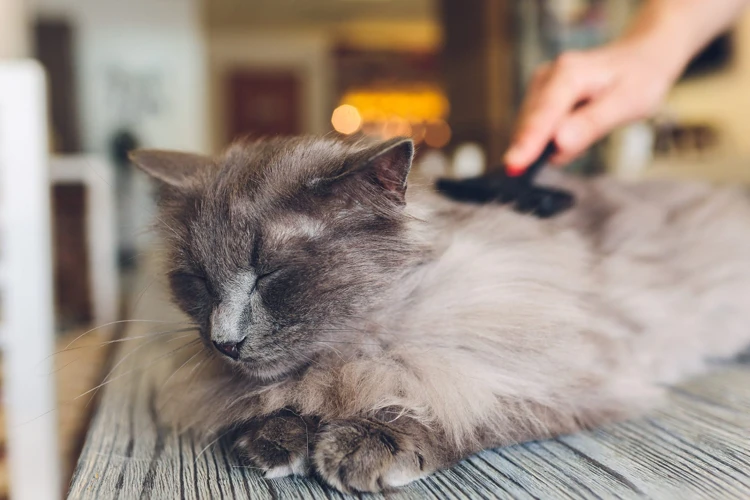
As much as we love our furry friends, cleaning up after them can be challenging, especially when it comes to shedding. It’s not just about keeping your home clean, but also keeping the air quality good for both you and your American Wirehair. In this section, we will discuss some strategies and tips for dealing with shedding at home, from choosing the right furniture and decor to using the right cleaning tools. Let’s get started!
Vacuuming and Sweeping Strategies
Keeping a clean home can be a challenge when dealing with a shedding pet. When it comes to vacuuming and sweeping strategies, it’s important to have a plan in place to effectively manage shedding. Here are a few tips to help keep your American Wirehair’s shedding under control:
| Strategy | Description |
|---|---|
| Invest in a high-quality vacuum | When it comes to pet hair, not all vacuums are created equal. Look for a model specifically designed for pet hair and make sure it has strong suction power and a HEPA filter to trap allergens. |
| Vacuum furniture and carpets regularly | Make sure to vacuum furniture and carpets at least once a week, or more frequently if necessary. This will help to pick up loose hair and prevent it from accumulating. |
| Sweep hard floors daily | Using a broom or a dry mop to sweep up shedding hair on hard floors can be an effective way to keep shedding under control. Make sure to sweep daily to prevent hair from accumulating. |
| Use a rubber broom | A rubber broom can be particularly useful for removing hair from carpets. The rubber bristles create a static charge that attracts hair and pulls it up from the carpet fibers. |
| Consider a robot vacuum | If you don’t have time to vacuum regularly, a robot vacuum can be a convenient option. Look for a model with strong suction power and a long battery life. |
By implementing these strategies, you can help to keep shedding under control and maintain a clean home. Remember to stay consistent with your cleaning routine and invest in high-quality tools and equipment to make the process easier.
Choosing the Right Furniture and Décor
Our home is where we get to express our creativity and style through furniture and décor. However, if you own an American Wirehair, you’ll need to consider practicality over style to manage shedding. Here are some tips for choosing the right furniture and décor:
- Leather: Leather furniture is an excellent choice for pet owners. It doesn’t trap hair like fabric and is easy to clean. It’s also durable and can withstand scratches and wears caused by your pet.
- Microfiber: Microfiber is another great option for pet owners. It’s a tightly woven fabric that doesn’t allow hair to penetrate easily. It’s also easy to clean with a vacuum or brush.
- Suede: Suede is a soft, velvety fabric that is ideal for pet owners. It doesn’t trap hair, and if your pet scratches it, the marks are not as visible as on leather or other fabrics. Suede requires regular cleaning to maintain its appearance.
- Darker Colors: Choosing darker colored furniture or décor can help hide shedding hair. Light-colored fabrics and furniture show hair more easily and require more cleaning.
- Texture: Consider incorporating textured surfaces into your décor. Rough and bumpy surfaces can make it challenging for hair to stick, making it easier to clean.
Remember, maintaining a clean home is key when dealing with shedding. By choosing the right furniture and décor, you’ll lessen your daily cleaning tasks and have more time to spend with your beloved American Wirehair.
Sticky Lint Rollers and Tape
One of the easiest and most effective ways to manage the shedding of your American Wirehair is by using sticky lint rollers and tape. These tools can quickly and efficiently remove loose hairs from your furniture, clothing, and carpets. Here are some tips for using sticky lint rollers and tape effectively:
- Invest in high-quality lint rollers: Cheap, low-quality lint rollers may not be sticky enough to effectively remove hair from your American Wirehair. Invest in a high-quality lint roller to ensure that it can pick up the loose hairs on your furniture and clothing.
- Use a combination of tape and lint rollers: For tight spaces such as corners or hard-to-reach areas, try using tape wrapped around your fingers to pick up hairs. A combination of tape and lint rollers can be very effective in removing all the loose hairs from your home.
- Roll in different directions: When using a lint roller, try rolling it in different directions, including back and forth, side to side, and diagonal. This can help pick up loose hairs that may have been missed during the first pass.
- Use a damp cloth: If you’re having trouble picking up all the hairs with a lint roller or tape, try using a slightly damp cloth instead. This can help to pick up the hairs that are stuck to the surface of your furniture or clothing.
Remember, when using sticky lint rollers and tape, be gentle with your American Wirehair. Too much pressure can cause discomfort and may even damage their coat. With a little patience and the right tools, you can manage the shedding of your beloved pet and keep your home looking clean and fur-free.
When to See a Veterinarian
As a general rule, shedding in American Wirehairs is a normal and healthy process. However, there are circumstances where shedding can be a cause for concern. If you notice excessive shedding that is causing your cat discomfort or leading to bald patches, it may be time to seek veterinary care.
Skin Conditions
Some skin conditions, such as fungal or bacterial infections, can lead to excessive or abnormal shedding. If you notice your American Wirehair scratching excessively or if their skin looks red or inflamed, it may be time to see the vet. They may need antibiotics or special shampoos to help treat the condition.
Parasites
Fleas, ticks, and other parasites can also cause excessive shedding in cats. These parasites feed on your cat’s blood and can cause anemia, which can lead to excessive shedding. If you notice your American Wirehair is scratching frequently, losing hair, or has flea dirt (tiny black specks) on their skin, take them to the vet for treatment.
Hormonal Imbalances
Certain hormonal imbalances, such as hypothyroidism or Cushing’s disease, can also cause excessive shedding. These conditions can also lead to other symptoms such as weight gain or loss, lethargy, or changes in appetite. If you notice any of these symptoms along with excessive shedding, it’s time to see the vet.
Allergies
Allergies can also cause excessive shedding in American Wirehairs. If your cat is allergic to something in their environment or in their food, they may scratch, lick, or chew excessively, which can lead to hair loss. If you notice your cat has a rash, hives, or gastrointestinal distress, it may be time to see the vet.
American Wirehairs shed, but it’s nothing to be worried about in most cases. However, if you notice your cat’s shedding is abnormal or excessive, it may be time to seek veterinary care. Your vet can help diagnose any underlying health conditions and recommend treatments to keep your cat healthy and happy.
Conclusion
Overall, dealing with shedding in your American Wirehair can feel like a daunting task, but it is important to remember that shedding is a normal and natural process. Implementing a few simple tips and tricks can help manage shedding and keep your home clean.
Regular grooming and bathing are essential in keeping your American Wirehair’s coat healthy and shiny while also reducing shedding. A healthy diet and nutrition plan can also make a difference in the overall health of your cat’s coat and skin.
Dealing with shedding in your home can be frustrating, but there are several strategies that can help. Regular vacuuming and sweeping can reduce the amount of hair in your home, and choosing the right furniture and decor can also help minimize the amount of hair that accumulates. Sticky lint rollers and tape can also be effective in removing hair from clothing and furniture.
It is important to monitor your cat’s shedding to ensure that it is within normal levels. If you notice excessive shedding or a change in your cat’s coat, it may be a sign of a health issue that requires veterinary attention. In addition, if you have any concerns about your cat’s shedding or overall health, it is always best to consult with a veterinarian.
Overall, managing shedding in your American Wirehair requires some effort, but it can be successfully controlled with a few simple strategies. By taking care of your cat’s coat and implementing effective cleaning methods at home, you can keep your home clean and your cat healthy and happy.
Frequently Asked Questions
1. Can a change in diet reduce shedding in my American Wirehair?
Yes, a balanced diet with proper nutrients and fatty acids can improve the health of your cat’s coat, ultimately leading to reduced shedding.
2. How often should I brush my American Wirehair?
You should brush your American Wirehair at least twice a week. However, daily brushing is recommended during shedding season to minimize loose hair around the house.
3. Can a bath reduce shedding in my American Wirehair?
Yes, regular baths can help to remove loose fur from your cat’s coat, ultimately reducing shedding in your home. Aim to bathe your cat every 4-6 weeks.
4. Is cutting my cat’s hair an effective way to reduce shedding?
No, cutting your cat’s hair is not an effective way to reduce shedding. American Wirehairs have a unique coat that naturally regulates their body temperature and protects against the elements. Cutting their hair can negatively affect this natural process.
5. Are there any health issues that can cause excess shedding in American Wirehairs?
Yes, underlying health issues such as allergies or thyroid problems can cause excessive shedding. If you suspect your cat is shedding more than usual, consult with your veterinarian to rule out any potential health concerns.
6. What kind of brush should I use for my American Wirehair?
Use a brush with wire bristles to effectively remove loose fur from your cat’s coat. A slicker brush can also be useful for removing tangles and matting.
7. How can I reduce shedding on my furniture and clothes?
Using sticky lint rollers or tape can be an effective way to remove loose fur from clothing and furniture. Investing in furniture with synthetic fabrics can also help to minimize shedding.
8. Can stress cause excess shedding in American Wirehairs?
Yes, stress can lead to excess shedding in cats. Try to create a calm and stress-free environment for your American Wirehair to help minimize shedding.
9. Is it normal for American Wirehairs to shed seasonally?
Yes, American Wirehairs typically shed seasonally during the spring and fall months. This shedding is a natural process to prepare for temperature changes and is not a cause for concern.
10. Can supplements reduce shedding in American Wirehairs?
Yes, supplements such as omega-3 fatty acids can help improve the health of your cat’s coat, ultimately leading to reduced shedding. Consult with your veterinarian before adding any supplements to your cat’s diet.

